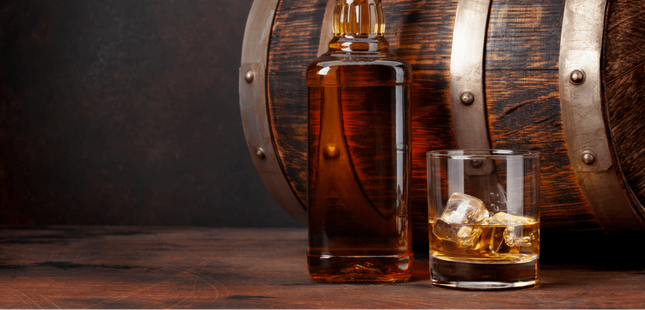SECURE WHISKEY STORAGE • NEXT DAY DELIVERY • ONE-TO-ONE SERVICE • ONLINE TASTING EVENTS

Peated whisky is made using malted barley smoked over peat fires, giving whisky that distinctive smoky flavour. The flavour develops further when aged in oak barrels for a minimum of 3 years.
The smoke from peat fires imparts a robust smoky quality to the whisky while contributing other notes such as earthiness, bonfire smoke, and even a little sweetness. Some whiskies also highlight touches of salt, seaweed and medicinal notes or, as many people call it, TCP. It’s the distiller’s choice as to whether they take a later cut in the distillation process, which introduces some of the iodine notes into the whisky. Laphroaig and Lagavulin are two distillers in particular that carry those medicinal notes.
Smoking peat produces a molecule called phenols, which are heavier molecules with a higher boiling point, so they evaporate towards the end of the distillation process. Controlling how much phenols are distilled will decide how smoky your whisky will become and how medicinal it will be.
The flavour profile will vary on the level of peat smoke used, the type of peat and the length of time the barely is smoked. Smokey whisky is a big, bold flavour enjoyed by those who prefer powerful, intense flavours.
How does whisky get its flavour?
The process of imparting flavour into whisky has many factors and varying degrees of which elements are used to create a unique flavour profile.
- Grains. Whisky is made from grains such as barley, corn, rye and wheat. The types of grain used will determine the flavour of the whisky created.
- Malting: Malting is the process of germinating and drying the grains. This process contributes to the flavour of the whisky because the grains begin to sprout, which produces enzymes that break the starch into sugars.
- Mash bill: Mash bill is the combination of grains used to make the whisky. For example, single malt whisky can only use malted barley, whereas bourbon uses 51% corn and a variety of other grains to make up the rest of the mash bill. The proportion of grains used will affect the type of flavour produced.
- Distillation: A fermented liquid is distilled to produce a final spirit. The distillation process determines the quality and flavour of the spirit, and as different stills produce different qualities, the distiller will choose to create a certain style based on the cuts.
- Maturation: Arguably, this part of the process is the most crucial factor when it comes to imparting flavour into the whisky. Different wood types, from European oak to American oak, will affect the whisky flavour. If the wood is virgin oak, this will especially affect the flavour, resulting in very strong woody notes as well as some spiciness and pepperiness added to the mix. The type of liquid previously in the cask - for example, sherry, port, bourbon or wine - will also determine the flavour. Another factor worth noting is the region where the cask is stored. If a cask is stored in Scotland, it will develop slowly and produce a typically rounded flavour, whereas a cask maturing in India will produce a younger, more vibrant liquid.
Although many factors determine the flavour of whisky, the maturation process is ultimately the most important part of the process.







